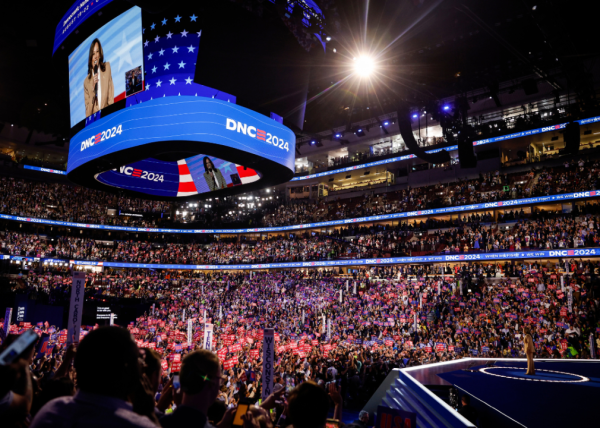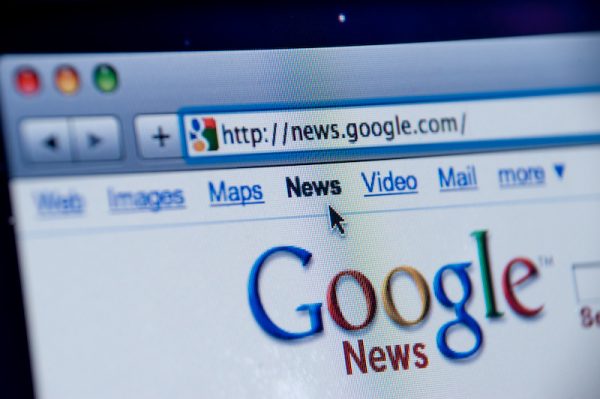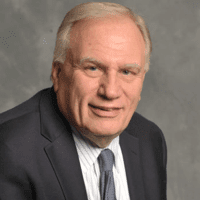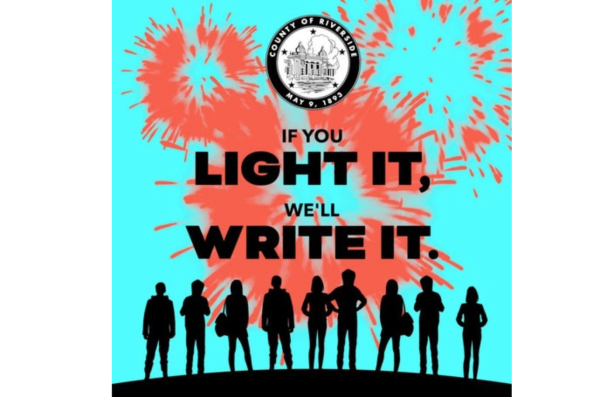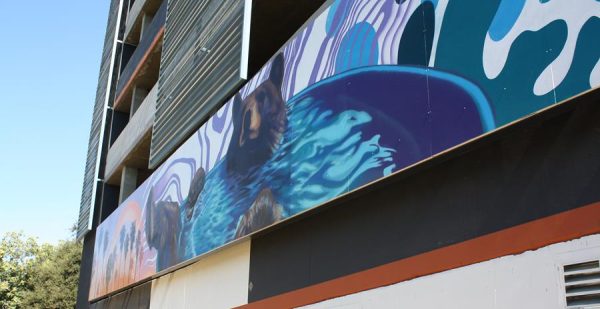While political convention fanfare can seem old-timey and corny, complete with silly hats and wild-eyed enthusiasm against a backdrop of endless red, white, and blue, the events are also epicenters for dealmaking, strategic maneuvering, fundraising, a fair share of backstabbing, and historic firsts.
The Republican National Convention’s final night in July, themed “Make America Great Once Again,” featured a far-reaching range of speakers, including disgraced Fox News host Tucker Carlson; Trump National Doral’s golf general manager, Carrie Ruiz; and Ultimate Fighting Championship CEO Dana White. Billy Graham Evangelistic Association President and CEO Franklin Graham also led the arena in prayer following a fiery speech from ’80s wrestling star Hulk Hogan, who ripped his shirt off in front of the crowd.
That night, former President Donald Trump addressed the crowd for more than 92 minutes with a bandaged ear, just days after surviving an assassination attempt.
Political conventions have also heralded many firsts — from the first Black woman to address the floor to the first woman to be nominated for the highest office. The Democratic National Convention, running from Aug. 19-22 in Chicago, will officially recognize Vice President Kamala Harris as the Democratic nominee for president. She is the first Black and South Asian woman to lead a major party ticket.
The convention forum has given us last looks as well. A grieving nation paid a tearful tribute to slain President John F. Kennedy at a convention in 1964, and venerable figures like Ted Kennedy and Ronald Reagan made poignant farewells on convention stages.
Stacker looked back at historic moments from the nation’s political conventions over the years, consulting academic accounts, news reports, and the memories of those who were there.

1948: Civil rights divide Democrats
At the Democratic Convention in 1948, where Harry Truman’s name was at the top of the ballot, dozens of delegates from Mississippi and Alabama walked out in opposition to the party’s civil rights platform, which included abolition of state poll taxes, an anti-lynching law, and desegregation of the military. The Southern delegates broke away and founded their own States’ Rights Democratic Party.

1964: A tearful tribute to JFK
Delegates to the 1964 Democratic National Convention were brought to tears by a moving video tribute to the late President John F. Kennedy, who had been assassinated less than a year earlier. The tribute was introduced by an emotional Robert Kennedy, then-attorney general, who was also assassinated four years later during his run for president.

1964: NBC reporter arrested on air
NBC television reporter John Chancellor was arrested in 1964 at the Republican National Convention in San Francisco. He had refused to leave when efforts were made to clear reporters from the convention floor following Barry Goldwater’s nomination. As he was escorted out by uniformed officers, he famously said on the air, “This is John Chancellor, somewhere in custody!”

1968: Chicago mayor accused of ‘Gestapo tactics’
The 1968 Democratic National Convention was roiled by hundreds of protestors who were arrested and injured outside on the streets of Chicago. Inside, Connecticut Sen. Abe Ribicoff accused Chicago Mayor Richard Daley of “Gestapo tactics.” The Chicago mayor can be seen, but not heard, angrily shouting and gesturing in response.

1968: Television reporter Dan Rather punched on convention floor
At that same heated 1968 Democratic Convention, CBS television reporter Dan Rather scuffled with security guards on the floor and could be heard saying: “Take your hands off me unless you’re planning to arrest me.” Still on air, he was knocked over and punched in the stomach. From the anchor booth, Walter Cronkite called the guards “thugs.”

1968: Julian Bond debuts as underage vice presidential pick
The 1968 Democratic Convention was infamously torn apart over issues of civil rights and the Vietnam War. Then-Georgia state legislator Julian Bond led an alternate delegation to the DNC, where he was nominated to be vice president as a protest candidate. At 28 years old, Bond was seven years too young to be eligible and withdrew his name from the ballot. Bond in 1986 was defeated in his bid for an Atlanta congressional seat by John Lewis, a fellow civil rights champion who died in July 2020.

1976: First Black woman makes keynote address to Democrats
Rep. Barbara Jordan of Texas in 1976 became the first Black woman to deliver the keynote address to a DNC. In her moving speech, she said: “We are a people in a quandary about the present. We are a people in search of our future. We are a people in search of a national community.”
Two years earlier, Jordan delivered a compelling statement about impeachment proceedings against President Richard Nixon before the House Judiciary Committee.

1980: Ted Kennedy’s challenge to Jimmy Carter
At the Democratic National Convention in 1980, Sen. Ted Kennedy ended his challenge to unseat President Jimmy Carter, delivering a speech that did not throw wholehearted support to Carter. A fumbling, failed attempt at posing the two rivals together with arms raised in unity followed. Kennedy’s performance was seen as taking steam out of Carter’s reelection bid, and Republican Ronald Reagan won the White House that November.

1980: ‘Hubert Horatio Hornblower Humphrey’
President Jimmy Carter made an unfortunate gaffe at the Democrats’ 1980 convention with the words “Hubert Horatio Hornblower!… Humphrey!” in a tribute to the former vice president and presidential candidate who died in 1978. Carter mixed up the Minnesota politician’s name with the fictional character Horatio Hornblower, a British naval officer in books by C.S. Forester. Making matters worse, his speech was followed by a spectacular failure of the balloons to fall from the convention hall ceiling. Carter was defeated by Republican Ronald Reagan later that year.

1984: ‘Tale of Two Cities’
In 1984, New York Gov. Mario Cuomo delivered his “Tale of Two Cities” keynote address, taking aim at President Ronald Reagan’s description of the nation as “a shining city upon a hill.”
“There is despair, Mr. President,” Cuomo said, “in the faces that you don’t see, in the places that you don’t visit in your shining city.” It was considered one of the best speeches by Cuomo, a skilled orator, and fueled hopes and expectations that he would seek the presidency.

1984: Jesse Jackson and the Rainbow Coalition
Rev. Jesse Jackson, who in 1984 sought the Democratic Party’s presidential nomination with his Rainbow Coalition campaign, mesmerized the convention with a stirring speech in which he described his constituency as “the desperate, the damned, the disinherited, the disrespected, and the despised. They are restless and seek relief.” But in a call for unity, he said, “Even in our fractured state, all of us count, and all of us fit somewhere.”

1984: ‘My name is Geraldine Ferraro’
The first woman nominated to be the vice presidential candidate of a major U.S. party accepted her honor in 1984 at the Democratic National Convention in San Francisco. The crowd went wild with just her opening words: “My name is Geraldine Ferraro.” The vice-presidential hopeful continued, saying, “I stand before you to proclaim tonight: America is the land where dreams can come true for all of us.”
Despite the feverish support of the DNC crowd, Ferraro’s ticket with presidential nominee Walter Mondale lost 49 out of 50 states in the general election that swept President Ronald Reagan into his second term in office.

1988: ‘Read my lips’
George H.W. Bush made a bold promise to supporters in 1988 at the RNC: “Read my lips: no new taxes.” The campaign promise, intended to paint Bush’s opponent Michael Dukakis as a tax-and-spend liberal Democrat, was one Bush broke after winning his bid for president. During his term, Bush signed multiple tax increases into law — including a hike in the personal tax rate ceiling to 31% from 28%.

1988: George H.W. Bush and the ‘silver foot in his mouth’
Ann Richards, Texas state treasurer and later governor with a famously sharp wit, delighted the audience at the Democratic National Convention in 1988 with her barbs at Republican George H.W. Bush. “Poor George. He can’t help it,” she said. “He was born with a silver foot in his mouth.”

1988: Ronald Reagan says goodbye
Outgoing President Ronald Reagan bid farewell to an emotional crowd at the 1988 RNC in New Orleans, where George H.W. Bush accepted the party’s nomination. “I’ll leave my phone number and address behind just in case you need a foot soldier,” Reagan said as he headed into retirement. Six years later, he released a letter sharing his Alzheimer’s diagnosis with the American public.

2004: A young Barack Obama is noticed
Many Americans were introduced to Barack Obama in 2004 when the Illinois state senator delivered a riveting keynote speech at the DNC in Boston.
Referring to himself as “a skinny kid with a funny name who believes that America has a place for him, too,” Obama delivered the now-famous line: “There’s not a liberal America and a conservative America — there’s the United States of America.”

2008: The lion’s last roar
When Barack Obama was nominated as the Democratic Party’s presidential candidate in 2008, Sen. Ted Kennedy — who was diagnosed three months earlier with brain cancer — made his farewell appearance. Known as the “Lion of the Senate,” Kennedy was surrounded on stage by family, including his children, nephews, and nieces — including Caroline Kennedy, who introduced him.

2008: Alaska hockey mom joins Republican ticket
Alaska Gov. Sarah Palin accepted her nomination as the Republican Party’s vice presidential candidate at the 2008 convention. Chosen to run alongside Sen. John McCain, the largely unknown politician described herself as a small-town “hockey mom.” “You know [what] they say the difference [is] between a hockey mom and a pit bull?” she asked. “Lipstick.”

2012: Clint and the empty chair
One of the oddest convention moments occurred in 2012 at the Republican National Convention when actor and director Clint Eastwood stood on stage next to an empty chair and held what was meant to be an imaginary conversation with President Barack Obama. It made a sensation, but not in the way organizers would have hoped. The setup seemed nonsensical, and the aging Hollywood star looked dottering talking to an invisible character.
Still, it gave late-night comedians plenty of material.

2016: Melania Trump’s familiar-sounding speech
At the RNC convention in 2016 nominating Donald Trump, his wife, Melania, made a speech — and caused an uproar — with sections taken from a 2008 address by Michelle Obama.
“Because we want our children in this nation to know that the only limit to your achievements is the strength of your dreams and your willingness to work for them,” Trump said. Michelle’s 2008 speech said: “Because we want our children — and all children in this nation — to know that the only limit to the height of your achievements is the reach of your dreams and your willingness to work for them.” A Trump speechwriter later said Melania Trump had cited passages of the earlier speech as inspirational that were inadvertently included in her own.

2020: COVID-19 causes a virtual DNC
The COVID-19 pandemic ushered in a highly unusual election year, including an unconventional, remote DNC in 2020.
The event was slated for July 13-16 in Milwaukee, but the pandemic caused planners to push festivities back to August. Ultimately, the decision was made to downsize the DNC entirely and make it largely virtual. Speakers and performers for the event were scattered across the U.S., while some Democratic officials gathered in Milwaukee.

2024: Hulk Hogan plays Trump’s hype man
The historic 2024 RNC was held July 15-18 at the Fiserv Forum in Milwaukee, Wisconsin.
The event’s closing night came just five days after an assassination attempt on Donald Trump during the former president’s rally in Butler, Pennsylvania. The shooter killed one rally attendee and severely injured two others. Trump’s upper right ear was grazed by one of the bullets. The presidential nominee, running for a second term four years after his first ended in 2020, appeared at the RNC with a bandage on his ear and shared a harrowing recap of the carnage that occurred at the rally in his speech on July 18th.
Also that night, former professional wrestler Hulk Hogan, whose given name is Terry Gene Bollea, took to the stage with a frenetic speech that energized the already enthusiastic crowd. Referring to Trump as his hero, the entertainer went on to perform his trademark T-shirt rip, tearing off a suit jacket and black “Real Americans” muscle shirt to reveal a red Trump-Vance T-shirt underneath. Amid the drama, the former president blew a kiss to the celebrity from the audience.
Written by Ellen Dewitt and Nicole Caldwell.
This article was copy edited from its original version.
Re-published with CC BY-NC 4.0 License.

